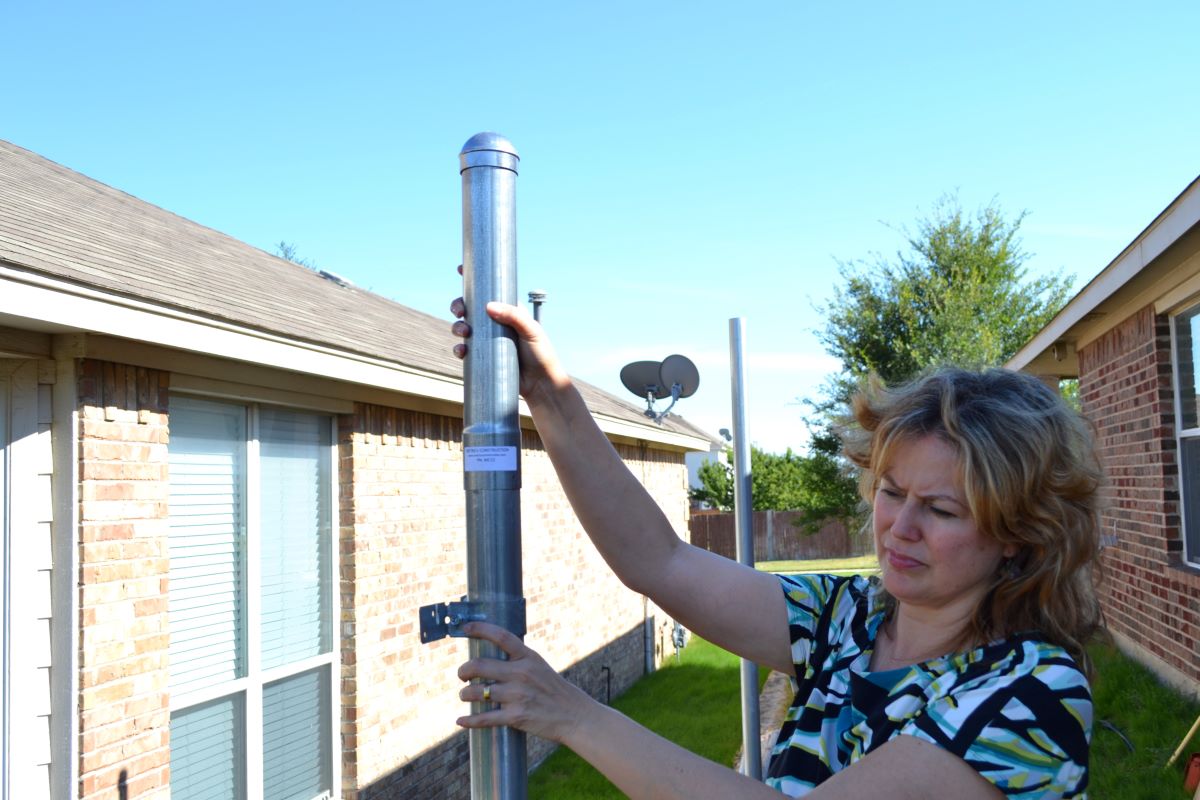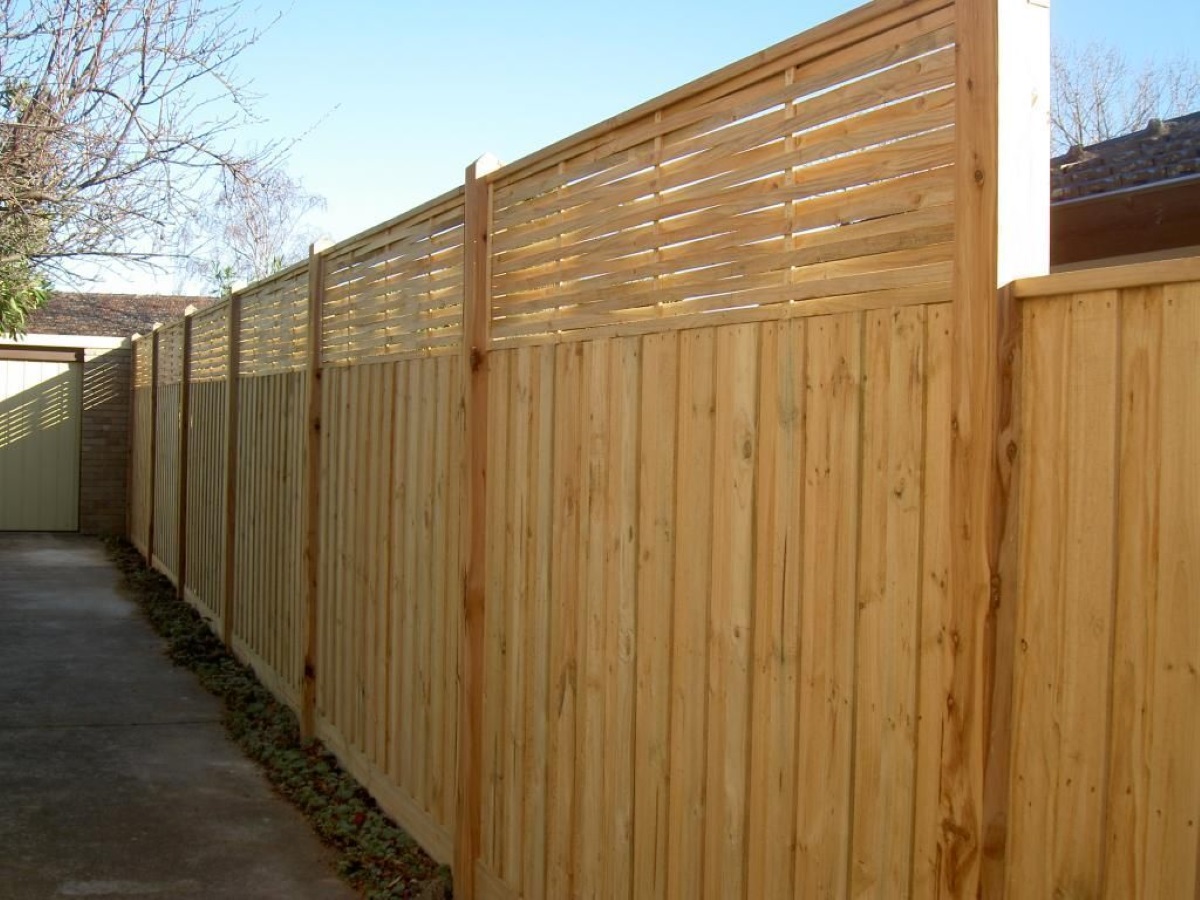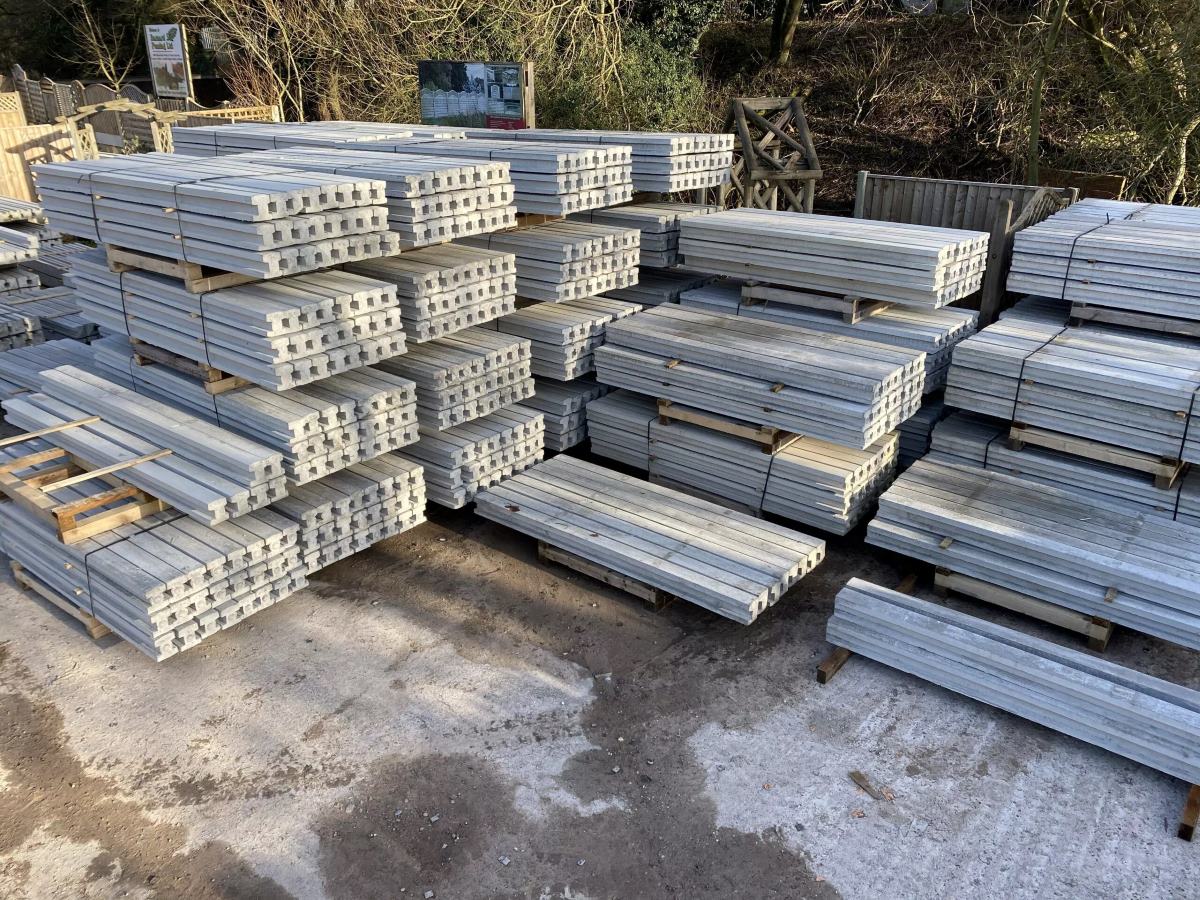

Articles
How To Extend Fence Posts
Modified: October 22, 2024
Learn how to extend your fence posts with these helpful articles. Get expert tips and step-by-step instructions for a sturdy and secure fence installation.
(Many of the links in this article redirect to a specific reviewed product. Your purchase of these products through affiliate links helps to generate commission for Storables.com, at no extra cost. Learn more)
Introduction
When it comes to fencing, there may come a time when you need to extend the height of your fence posts. Whether you want to enhance privacy, keep pets safe, or add a decorative touch, extending your fence posts can be a practical solution. However, it’s important to approach this task with proper planning and execution to ensure the stability and durability of your fence.
In this article, we will discuss why you might need to extend your fence posts, the factors to consider before doing so, the tools and materials you’ll need, as well as a step-by-step guide on how to extend fence posts. We’ll also explore alternative methods that you can consider for extending fence posts. So, let’s delve into the world of fence post extensions and get started on creating a sturdy and functional fence.
Key Takeaways:
- Enhance privacy, security, and aesthetics by extending fence posts. Consider structural integrity, local regulations, and alternative methods for a successful and compliant project.
- Gather the right tools and materials, follow a step-by-step guide, or explore alternative methods to achieve a sturdy, attractive, and functional fence extension. Approach with proper planning and execution for long-lasting results.
Read more: How To Secure Fence Post
Why Extend Fence Posts?
There are several reasons why you might need to extend your fence posts. Understanding these reasons will help you determine if extending your fence posts is the right solution for your needs.
- Increased Privacy: One common reason for extending fence posts is to increase privacy. If you feel like your current fence isn’t providing adequate privacy, extending the height of the fence posts can help create a more secluded space in your outdoor area.
- Security: Extending fence posts can also enhance the security of your property. By raising the height of your fence, you can deter trespassers and unwanted intruders.
- Pet Safety: If you have pets, extending fence posts can be essential for their safety. By increasing the height of the fence, you can ensure that your furry friends are kept secure within your yard, preventing them from wandering off or being exposed to potential dangers.
- Enhanced Aesthetics: Sometimes, extending fence posts is solely for decorative purposes. By adding height to your fence, you can create a more visually appealing and imposing structure that complements your landscape or architectural style.
- Compliance: In certain cases, extending fence posts might be necessary to comply with local building codes or neighborhood regulations. If your current fence doesn’t meet the required height restrictions, extending the fence posts can bring your fence up to code.
Whatever your reasons may be, extending fence posts requires careful consideration and planning. It’s essential to evaluate the feasibility and practicality of extending your fence posts before proceeding with the project. By understanding the factors involved, you can make an informed decision and ensure the success of your fence extension endeavor.
Things to Consider Before Extending Fence Posts
Extending fence posts can be a straightforward task, but there are several important factors to consider before you begin. By taking these factors into account, you can ensure that your fence extension will be successful and meet your specific needs. Here are some key things to consider:
- Structural Integrity: Before extending your fence posts, it’s crucial to assess the structural integrity of your existing fence. Make sure that the current posts and panels are stable and in good condition. If there are any signs of damage or weakness, address them before proceeding with the extension.
- Municipal Regulations: Check your local building codes and regulations to ensure compliance with height restrictions and any other requirements for fence extensions. Obtain any necessary permits or approvals before starting the project to avoid potential issues in the future.
- Material Compatibility: Consider the materials used in your existing fence and whether they can be easily extended. If your fence posts are made of wood, ensure that the new extension materials are compatible and will blend seamlessly with the existing posts.
- Fence Design: Evaluate the design and style of your current fence. Determine if extending the fence posts will maintain the overall aesthetic integrity of your fence. You may need to consider alternative options if extending the posts would result in an unappealing or disproportionate appearance.
- Neighboring Properties: Take into account the impact that extending your fence posts may have on your neighbors. Ensure that the increased height does not block their sunlight, obstruct their views, or infringe on their privacy.
- Budget and Time: Consider the cost of the materials and tools required for the extension, as well as the time it will take to complete the project. Have a realistic budget and timeframe in mind before you begin.
By carefully considering these factors, you can confidently move forward with extending your fence posts. Planning ahead and addressing any potential challenges will help ensure that your fence extension is successful and meets your desired outcome.
Tools and Materials Needed
Before you begin extending your fence posts, it’s essential to gather the necessary tools and materials. Having the right equipment in hand will make the process smoother and more efficient. Here’s a list of the tools and materials you’ll need:
Tools:
- Saw or reciprocating saw
- Tape measure
- Level
- Power drill
- Drill bits (appropriate for your fence post material)
- Socket wrench or adjustable wrench
- Screwdriver (if required for your specific fence)
- Hammer
- Pencil or marker
- Safety goggles
- Gloves
Read more: How To Repair A Fence Post
Materials:
- New fence posts (same material and dimensions as existing posts)
- Fence post caps
- Concrete mix
- Water
- Gravel or crushed stone
- Support brackets or connectors (if needed)
- Fasteners (screws, nails, or bolts, depending on your fence type)
- Paint or stain (if desired for finishing)
Make sure to choose the appropriate materials based on the type of fence you have and your specific requirements. For example, if you have a wooden fence, select pressure-treated or rot-resistant posts for durability.
Additionally, consider the quantity of materials needed based on the number of fence posts you plan to extend. It’s always a good idea to purchase a few extra materials in case of any mishaps or unforeseen circumstances.
As you gather your tools and materials, ensure that everything is in good working condition, and take appropriate safety precautions while working with power tools and handling heavy materials.
With the right tools and materials at your disposal, you’ll be well-prepared to tackle the task of extending your fence posts.
Step-by-Step Guide to Extending Fence Posts
Now that you’ve gathered the necessary tools and materials, it’s time to dive into the process of extending your fence posts. Follow this step-by-step guide to ensure a successful fence extension:
- Measure and mark: Start by measuring the desired height for your fence extension. Use a tape measure to mark the height on your existing fence posts. Make sure to measure and mark each post accurately.
- Cut the extension: Using a saw or reciprocating saw, carefully cut the new fence posts to match the desired height. Take caution and follow the manufacturer’s instructions for the specific type of saw you are using.
- Prepare the existing posts: Clean the top portion of the existing fence posts to ensure proper adhesion. Remove any dirt, debris, or loose paint using a brush or cloth.
- Attach the extensions: Apply a layer of construction adhesive or wood glue to the top of each existing fence post. Carefully place the cut extensions onto the existing posts, aligning them with the marked height. Press the extensions firmly to create a strong bond.
- Secure the extensions: Use support brackets or connectors as needed to reinforce the connection between the existing fence posts and the extensions. Attach them with screws or bolts, following the manufacturer’s instructions.
- Mix and pour concrete: Dig a hole around each extended post, ensuring it is deep enough to accommodate the additional height. Mix the concrete according to the manufacturer’s instructions, and pour it into the holes, filling them to the desired level. Use a level to check that the posts are straight and aligned before the concrete sets.
- Add gravel or crushed stone: Place a layer of gravel or crushed stone around the base of each post to improve drainage and stability.
- Allow concrete to set: Follow the recommended curing time specified on the concrete product. Avoid applying any stress or pressure to the newly extended fence posts until the concrete has fully hardened.
- Finish the fence: Once the concrete is fully set, you can add additional finishing touches to your fence extension. Install fence post caps to protect the tops of the posts and give a polished look. You can also choose to paint or stain the fence, if desired, to match the existing color or create a cohesive appearance.
Remember to take necessary safety precautions and follow the manufacturer’s instructions for each step. If you’re unsure about any aspect of the process, consult a professional or seek guidance from a knowledgeable individual.
By following these step-by-step instructions, you can successfully extend your fence posts and achieve the desired height for your fence.
Consider using fence post extensions to add height to existing posts. These can be easily attached and will provide the extra length needed to extend the height of the fence.
Alternative Methods to Extend Fence Posts
While the step-by-step guide mentioned earlier provides a traditional approach to extending fence posts, there are alternative methods that you can consider based on your specific needs and circumstances. Here are a few additional techniques:
- Fence post extensions: Fence post extensions, also known as post extenders, are readily available in the market. These pre-made sections can be attached to the top of existing fence posts to increase their height. They are typically made of metal or sturdy plastic and come in various sizes and styles to match different fence types. Fence post extensions are easy to install and can be a convenient solution if you prefer a quicker and simpler method.
- Trellis or lattice panels: Another popular alternative for extending fence posts is attaching trellis or lattice panels above the existing fence. These panels not only increase the height but also add a decorative element to your fence. Attach the panels securely to the top of the fence posts using screws or nails. Ensure that the panels are aligned properly and provide the desired amount of privacy or screening.
- Plantings: If you want a more natural and visually appealing approach, consider planting tall shrubs, vines, or climbing plants near the existing fence. As the plants grow, they can provide additional height and privacy. Just make sure to choose plants that are suitable for your climate and properly maintain them to prevent damage to the fence.
- Bamboo or reed rolls: Bamboo or reed rolls can be attached to the existing fence to extend its height while creating a unique and natural look. These rolls are available in different heights and can be easily attached using wire or zip ties. Bamboo or reed rolls also offer additional coverage and can be an excellent option if you prefer a more eco-friendly solution.
- Fence toppers: Fence toppers are decorative elements that can be added to the top of existing fences to increase their height. They come in various designs and materials, such as metal scrolls, ornamental ironwork, or even solar-powered lights. Fence toppers can give your fence a stylish and personalized touch while extending its height.
When exploring alternative methods, always consider the compatibility of the chosen method with your existing fence and its overall aesthetic appeal. It’s important to select an option that aligns with your desired outcome and meets any necessary regulations or guidelines in your area.
Remember to evaluate the pros and cons of each alternative method and choose the one that best suits your preferences, budget, and practicality. If you’re unsure about which option to pursue, consulting with a fencing professional can provide valuable guidance and recommendations.
By considering these alternative methods, you can find a solution that fits your unique needs and achieve the desired height and functionality for your fence.
Conclusion
Extending fence posts can be a practical and effective solution for various reasons, such as increasing privacy, enhancing security, or adding a decorative touch to your fence. By following the step-by-step guide or exploring alternative methods, you can successfully extend the height of your fence and achieve your desired outcome.
Before starting the project, it’s important to consider factors such as structural integrity, municipal regulations, material compatibility, and the impact on neighboring properties. By taking these factors into account, you can ensure a successful and compliant fence extension.
Gathering the necessary tools and materials is crucial for a smooth and efficient process. Double-check that you have all the tools required, and select appropriate materials that match the existing fence and meet your specific needs. Safety should always be a priority, so make sure to use safety goggles, gloves, and exercise caution when handling power tools or heavy materials.
The step-by-step guide provides detailed instructions on extending your fence posts, from measuring and cutting the extensions to securing them and pouring concrete for stability. Alternatively, you can explore alternative methods such as fence post extensions, trellis or lattice panels, plantings, bamboo or reed rolls, or fence toppers. Each method offers its own advantages and can be tailored to your preferences and requirements.
Remember to check local regulations, obtain any necessary permits, and consult professionals if you have any doubts or concerns. By approaching the task with proper planning and execution, you can achieve a sturdy, attractive, and functional fence extension that meets your specific goals.
Whether you’re seeking additional privacy, enhancing security, or simply adding a decorative touch to your fence, extending your fence posts is a practical and achievable project. With careful consideration, the right tools and materials, and attention to detail, you can successfully extend your fence posts and enjoy the benefits of an improved fence for years to come.
Ready to tackle more creative projects after extending those fence posts? Dive into the world of crafting with our guide on essential woodworking techniques, perfect for anyone looking to shape up their skills. Or maybe you're itching to transform your outdoor space? Our collection of innovative outdoor projects offers plenty of inspiration to get you started. Whether you're honing your craft skills or enhancing your backyard, these articles are sure to spark your next big project!
Frequently Asked Questions about How To Extend Fence Posts
Was this page helpful?
At Storables.com, we guarantee accurate and reliable information. Our content, validated by Expert Board Contributors, is crafted following stringent Editorial Policies. We're committed to providing you with well-researched, expert-backed insights for all your informational needs.















0 thoughts on “How To Extend Fence Posts”